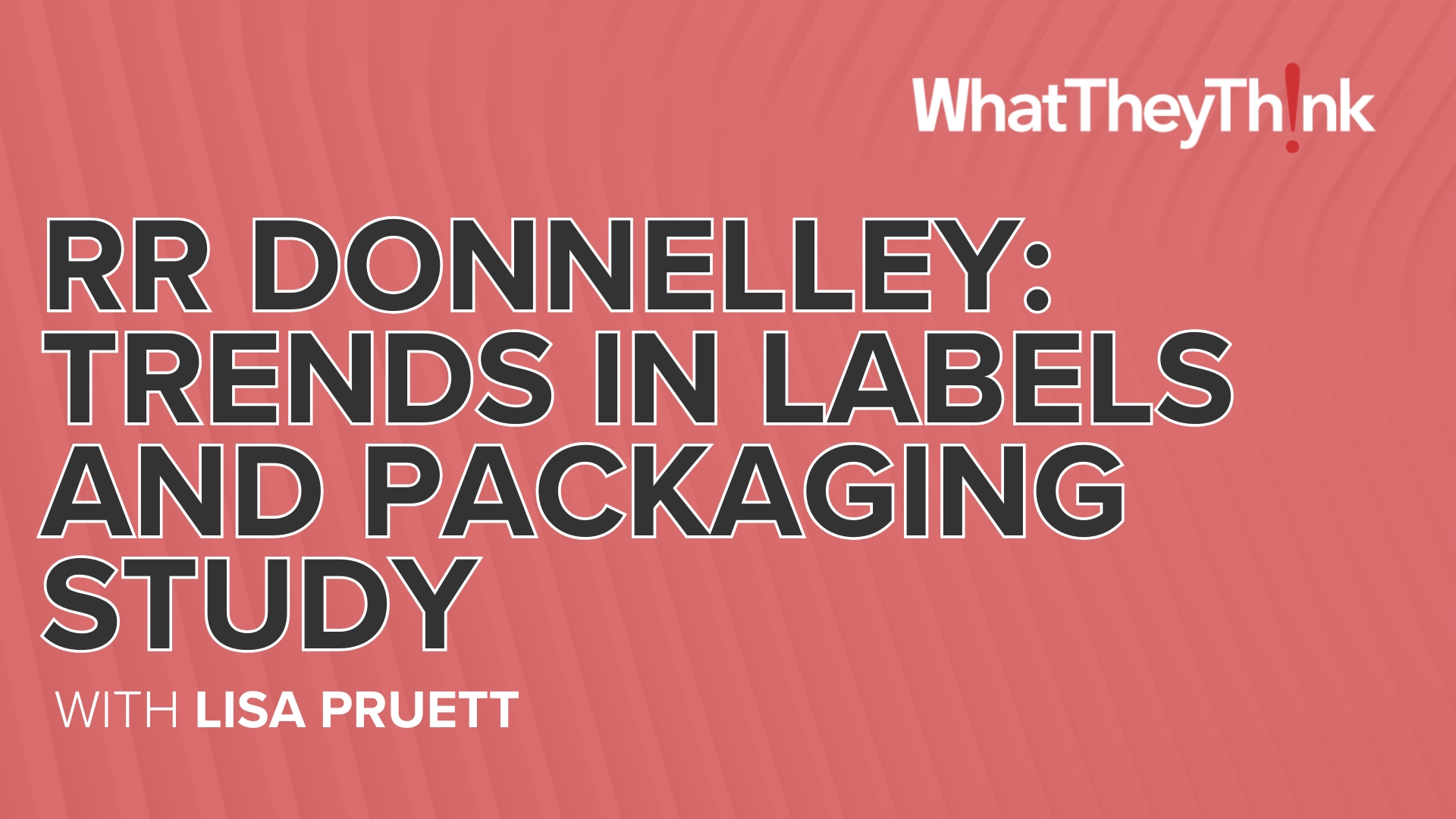By: Alon Bar-Shany of HP
Editor’s Note: This content is sponsored by HP
Over the last decade digital printing has moved from a niche market to a high growth segment embraced by a large number of print service providers (PSPs) that acknowledge the added value and higher profits of digital. One of the results of the proliferation of digital technologies is a convergence of once separate activities.
Today we are seeing increasing overlaps in marketing and packaging trends made possible by the use of digital print in packaging. The value of digital, given the high quality and versatility of the solution, is driving more brands to adopt the technology. The benefits of short-run, fast turnaround digital printing are apparent in the label segment for years and are becoming more apparent and appreciated by flexible packaging brand managers. As digital printing innovation continues, brand managers are recognizing its potential to shorten supply chains, control stocks, streamline logistics and reduce or eliminate warehousing, while maintaining print quality and brand identity standards. Digitally printed runs are getting longer as the productivity of the presses and workflow improves.
With digital presses that can print on the same stocks as gravure and flexo presses, it is possible to produce short runs of flexible packaging that match those produced conventionally in longer runs. This gives retailers the flexibility to receive products in advance of main deliveries or to build up supplies to meet unexpected demand. Short runs also reduce the cost of producing and storing large inventories of packaging materials and goods. Printing less at one time also lowers the risk of wasting materials that become obsolete before they’re used. However, unlike labels, the bulk of demand for flexible packaging needs a 29 inch or B2 format, which until now was not available.
Building Relationships Using Digital Printing
Developments in conventional printing both enabled and complemented changes in marketing. Yet, full-color, variable data digital printing (VDP), takes the marketing revolution even further – all the way to the personal level. Digital packaging printing enables customer relationship management (CRM) activities to include products with personalized images and messages, fully compliant with brand identity specifications, and on the same substrates as conventional, static packaging.
Agencies and marketers are applying the capabilities of digital printing in a variety of creative, value-adding ways. Using online and mobile CRM messages, brands are enhancing the relationship with customers by offering personalized packaging – from design-your-own beer bottle and soft drink labels and sleeves to candy wrappers and tissue boxes. These custom items interact directly with individual customers who are able to create messages and designs, or upload images for digital printing as flexible packaging, shrink sleeves, labels or folding cartons.
Personalized packaging initiatives can be promoted though the whole range of CRM touch-points: printed and email direct mail, online advertisements and also via blogs, Tweets, social media sites and virtual store fronts.
VDP isn’t only for personalized CRM applications or products featuring customer-generated designs. It can be used to produce custom versions for target markets or regional variations and also for adding variable or static barcodes, QR codes, batch numbers and other track and trace information. This eliminates the need for a separate imprinting process and accelerates delivery times.
Digital Presses for Flexible Packaging
Print quality, reliability and versatility are what flexible packaging converters of today and tomorrow are looking for – along with the right economics and format.
International brand managers demand accurate color matching. Materials printed digitally need to match those printed conventionally, and also need to be replicated across the substrate range. Converters will also be looking for a digital press that prints beyond the standard colors for a digital press that can print five, six and seven colors.
The ease of mixing special colors and loading them onto the press is a significant consideration. There is no point gaining time by digitally printing a short run, only to lose it on lengthy color changes and make-readies.
Flexible packaging printing also uses white ink as a color in its own right or as a backing color; the opacity of the white needs to have comparable quality to that achieved conventionally.
All colors, including white and other special colors, should be capable of being printed to the same high quality on the full range of substrates that flexible packaging buyers demand. Some digital presses can print on a very wide range of media, including PE, PET, BOPP, CPP, PA, PVC, OPS, metalized film, bio-degradable films. Some digital printing systems use too much heat in their processes to handle some materials.
For Your Consideration
Training, support and financial assistance should also be considered when choosing a digital press. While digital flexible packaging printing may still sound like a step into the unknown for traditional converters, some suppliers offer support from myriad sources and programs.
Selecting a press is only part of the process of going digital. Training by suppliers should go beyond the press operator and include sales and marketing advice because selling digital print is different from selling conventional print. Many suppliers offer financial packages that should be investigated to protect cash flow and ensure profitability.
Finally, integrating a digital press into a well-established conventional workflow can have a major impact on a company’s success. Digital press manufacturers that have existing partnerships with prepress and finishing suppliers will be able to help construct a digital end-to-end solution that best meets the requirements and integrates seamlessly into existing and future operations.
Since the launch of the Indigo Omnius in 1995, flexible packaging has been a market where the potential for digital printing has been recognized, first by Indigo, then by HP. Even in the early days, companies were printing short-run packaging, samples and trial packaging with the benefit of substrate versatility and reliable color matching.
Digital flexible packaging is about opening new opportunities for revenue streams, services for new and existing customers, and for growth in your business.















Discussion
By Greg Imhoff on Dec 19, 2013
Good summary Alon Bar especially on Digital matching Conventional in Opaque White and in Special Colors.
Smaller can be bigger and no doubt substrate flexibilities are being added in Digital.
I am also interested in learning more from your statement on the impact of Digital added to Conventional workflows.